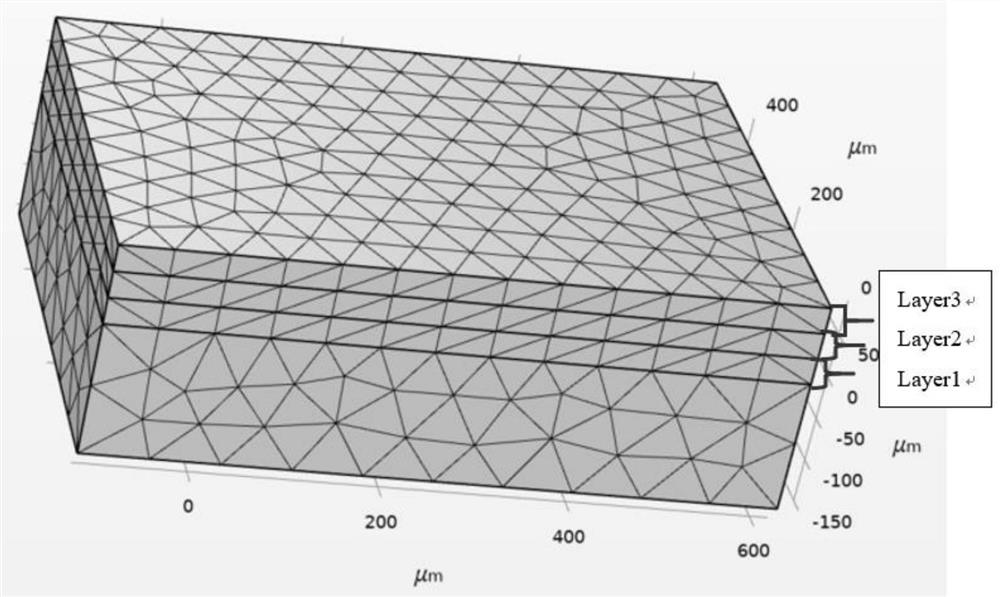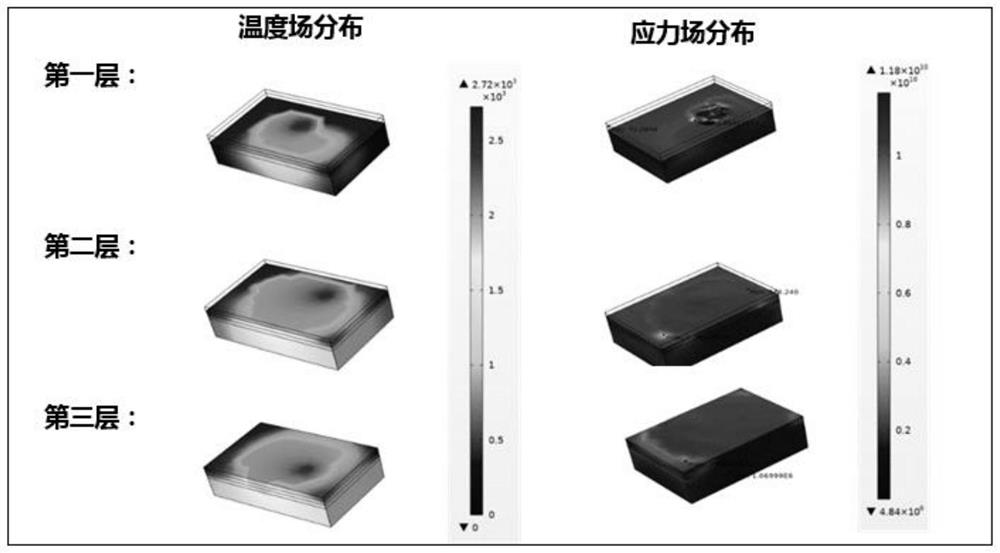Method for predicting interlayer thermal stress distribution in selective laser melting process based on COMSOL
A technology of selective laser melting and thermal stress, which can be used in design optimization/simulation, process efficiency improvement, special data processing applications, etc., and can solve problems such as inability to accurately predict thermal stress distribution.
- Summary
- Abstract
- Description
- Claims
- Application Information
AI Technical Summary
Problems solved by technology
Method used
Image
Examples
Embodiment Construction
[0031] Below in conjunction with accompanying drawing, the present invention is further described:
[0032] The present invention provides a method based on COMSOL to predict the interlayer thermal stress distribution in the selective laser melting process, characterized in that: the method includes the following steps: figure 1 as shown,
[0033] S1: Build a 3D solid heat transfer and structural mechanics transient model based on COMSOL;
[0034] S2: Determine the parameters in the simulation process, the parameters include scanning interval D_spot, laser scanning speed v_spot, laser power P_laser, laser radius r_spot, surface radiation rate A_Gass, powder accumulation rate w_powder and powder layer thickness;
[0035] S3: Determine the material properties of the powder to be melted, the material properties include thermal conductivity, specific heat capacity, material density, thermal expansion coefficient, Young's modulus and Poisson's ratio;
[0036] S4: Determine the pa...
PUM
 Login to View More
Login to View More Abstract
Description
Claims
Application Information
 Login to View More
Login to View More - R&D
- Intellectual Property
- Life Sciences
- Materials
- Tech Scout
- Unparalleled Data Quality
- Higher Quality Content
- 60% Fewer Hallucinations
Browse by: Latest US Patents, China's latest patents, Technical Efficacy Thesaurus, Application Domain, Technology Topic, Popular Technical Reports.
© 2025 PatSnap. All rights reserved.Legal|Privacy policy|Modern Slavery Act Transparency Statement|Sitemap|About US| Contact US: help@patsnap.com



